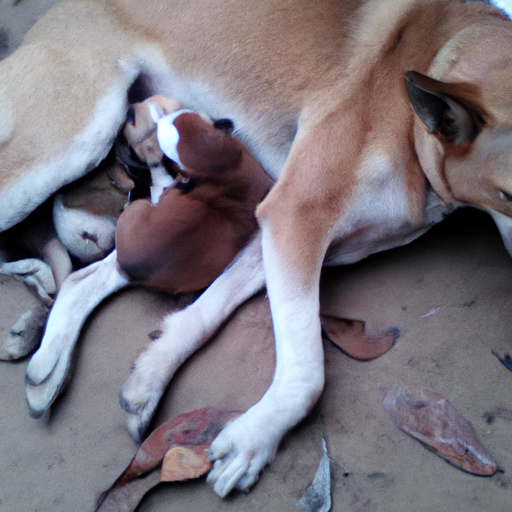The miracle of birth is a fascinating spectacle that occurs in all forms of life. However, today we focus on the delightful world of dogs. Where do dogs give birth from? This may seem like a straightforward question, but it entails a complex process of canine reproduction that is intriguing in its own right.
Table of Contents
Key Takeaways
- Dogs give birth through their reproductive tract, specifically the vulva.
- The birthing process, also known as whelping, can last from 2 to 24 hours.
- Post-birth care is crucial for the health and survival of both the mother and the puppies.
- Educating oneself about the birthing process can help prevent complications and ensure the wellbeing of the dog and puppies.
Understanding Canine Reproduction
Dogs give birth from their reproductive tract, which is a system of internal and external organs that work together to conceive, gestate, and birth puppies. The vulva, which is the external part of the female dog’s reproductive organ, is where the puppies pass through during birth.
Just like humans, female dogs have a menstrual cycle, commonly known as the “heat cycle”. This cycle lasts approximately six months and is divided into four stages: proestrus, estrus, diestrus, and anestrus. The most fertile stage is the estrus, where the female dog (bitch) is receptive to mating with a male dog (stud). Here is a detailed guide to understanding the heat cycle in dogs.
The Birthing Process
The birthing process in dogs, also known as whelping, begins with the nesting phase, where the pregnant dog will start to look for a safe and comfortable place to give birth. As a caregiver, you can help by providing a whelping box filled with clean and comfortable bedding.
Once the first stage of labor starts, the bitch will exhibit signs such as panting, restlessness, and loss of appetite. This stage may last up to 36 hours. The second stage is the actual birth of the puppies. Each puppy is delivered in its own amniotic sac, which the mother dog will instinctively break open and clean.
The length of the whelping process varies widely, lasting anywhere from 2 to 24 hours. It’s important to observe the process closely and contact a vet immediately if there are signs of distress or complications. This video offers an insightful look into the whelping process.
To understand more about the birthing process, check out these articles on dog pregnancy and puppy care from OneTopDog.
Post-Birth Care
After the birthing process, the mother dog will need plenty of rest, water, and high-quality dog food to recover and produce sufficient milk for her puppies. The puppies, on the other hand, will need warmth and regular feeding to grow and develop healthily.
Monitor the mother and puppies closely during the first few weeks, as this is a critical period where complications can arise. To ensure the best care, consult your vet or check out this guide on post-pregnancy care for dogs.
FAQs
Q: How long does dog pregnancy last?
A: Dog pregnancy lasts approximately 63 days, but it can vary between 58 to 68 days.
Q: How many puppies can a dog have in one litter?
A: The number of puppies in a litter can vary widely, ranging from one to more than ten puppies.
Q: How can I tell if my dog is pregnant?
A: Signs of dog pregnancy include increased appetite, weight gain, and behavioral changes. However, the most accurate way to confirm pregnancy is through a vet examination.
Q: What should I do if my dog is having trouble giving birth?
A: If your dog is showing signs of distress or complications during birth, you should contact a vet immediately.
In conclusion, where dogs give birth from is a simple question that opens up a fascinating world of canine reproduction. It’s crucial to understand this process, especially if you’re a dog caregiver, to ensure the health and wellbeing of your furry friend and her adorable puppies. The miracle of life is not only beautiful but also a responsibility that requires knowledge, preparation, and care.



